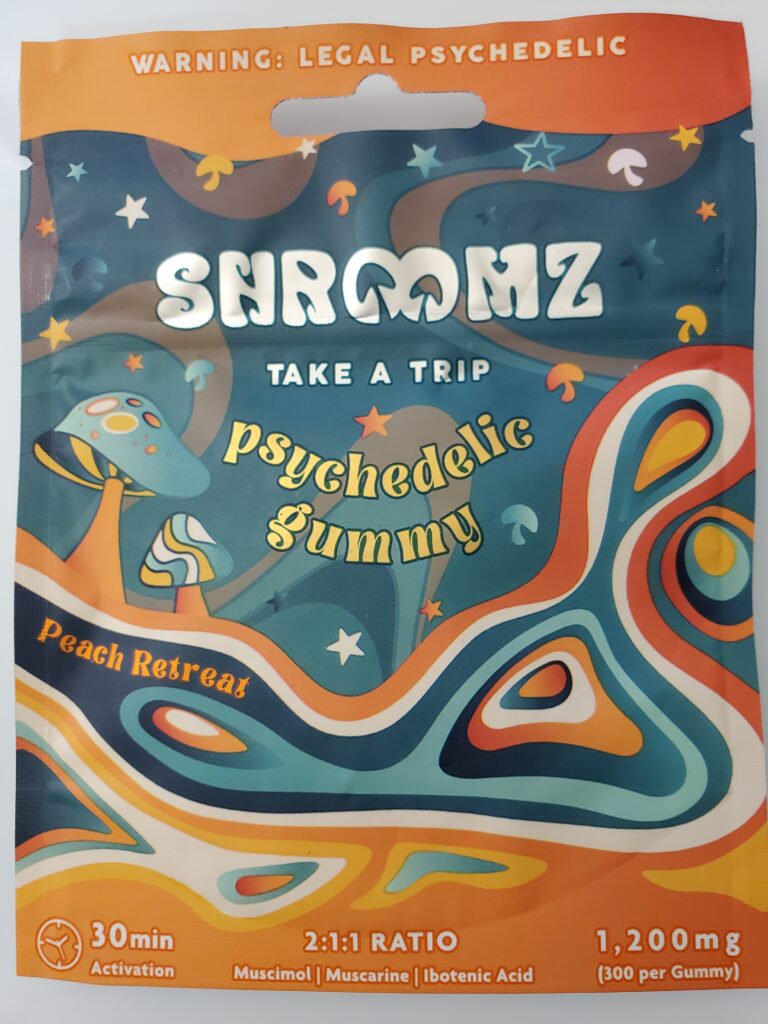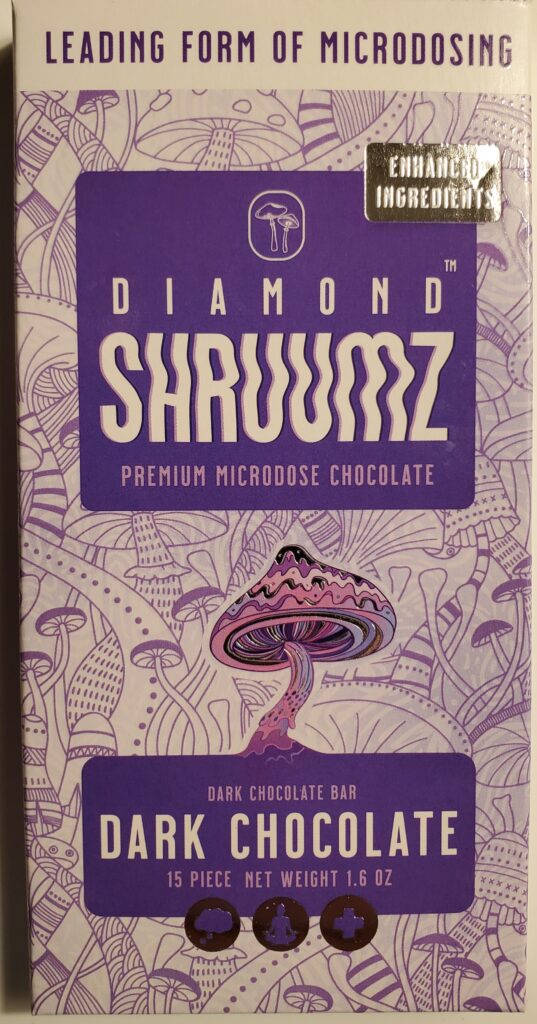Mushrooms

Long Term consequences of using hallucinogens
Persistent changes in personality/attitudes, depression, spirituality, anxiety, wellbeing, substance misuse, meditative practices, and mindfulness were documented. Mystical experiences, connectedness, emotional breakthrough, and increased neural entropy were related to these long-term changes in psychological functioning (Aday JS et al.Neurosci Biohav Rev.2020 Jun;113:179). Recognizing the possibility of long-term effects is critical to prevention. These effects may occur following one-time use or in chronic regular users. Two long term conditions are (1) Persistent psychosis: characterized by disorganized thinking, paranoia and mood and visual disturbances (flash backs) and (2) Hallucinogen persisting perception disorder (HPPD): characterized by chronic hallucinations and other visual disturbances. Other unpredictable long-term effects include speech problems, memory loss, weight loss, anxiety and depression and suicidal ideation.
Psilocybin-containing Mushrooms
Psilocybin mushrooms (Shrooms, Boomers, or Golden Tops) commonly known as “magic mushrooms” are an informal group of fungi that contain psilocybin which is metabolized by the liver to psilocin after ingestion. The mushroom has been used for hundreds of years by native peoples in North America for religious ceremonies. The mushrooms are eaten raw, cooked or made into a tea. Psilocybin mushrooms have not been known to cause physical or psychological dependence and addiction.
The psychedelic effects tend to appear about 20 minutes after ingestion and last up to 6 hours. A negative mind-set can set the stage for a negative experience and a positive mid-set means a more pleasant trip. The effects are subjective and vary among individual users. Side effects include nausea and vomiting, euphoria, muscle weakness, drowsiness, lack of coordination, panic attacks and transient psychosis. Using mushrooms rarely results in any life-threatening symptoms. Long term users may experience flash-backs, occurring weeks or months after the last dose.
Psilocybin present in Magic Mushrooms typically stimulates receptors in the brain that cause perceptual changes, emotional shifts, and spiritual awakenings. Psychedelic effects include visual changes such as halos around lights and objects, vivid colors and flashbacks. The effects appear 30 to 60 minutes after consuming psilocybin mushrooms, peak after 1-2 hours, and last about 4-6 hours with an “afterglow” period sometimes lasting several hours to several days. That is not the case with Muscimol-containing mushrooms.
Muscimol-containing mushrooms
Amanita muscaria mushrooms (Fly Agaric)

Amanita muscaria (Fly Agaric) is a red-and-white-speckled psychoactive mushroom that is native to North America. It is one of the most recognizable and widely encountered mushrooms in popular culture. Its effects are different from traditional “Magic Mushrooms”.

“Fly agaric” is said to cause more delirium. It acts on different brain receptors than psilocin producing a dreamlike state-of-being, relaxation and sedation accompanied by extreme sweating, vomiting and defecating. Many psychedelics (including LSD, psilocybin and mescaline) are non-toxic making it difficult to overdose on these compounds. A. muscaria is toxic. Parboiling the raw mushroom twice in water weakens its toxicity but also weakens its psychoactive effects. The effects of consuming raw non-boiled mushrooms are stronger, and the risks are greater.
The three active ingredients in Amanita muscaria are muscimol, Ibotenic acid and muscarine. Muscimol and Ibotenic acid are primarily responsible for the mushroom’s psychoactive effects. Muscimol is the most potent psychoactive agent. Ibotenic acid is more stimulating and energizing. When mushrooms contain more Ibotenic acid than muscimol users typically report confusion and agitation. Muscarine is present in trace quantities and is the weakest psychoactive compound in this spotted species.
The effects of “fly agaric” usually start within 30 min of ingestion with severe nausea, vomiting, diarrhea, cramps, tremor, ataxia (unsteadiness) and incoordination. Some users fall into a deep sleep and report having strange and frightening dreams. After 60 min, mental status is altered and characterized by declining senses, alternating between agitation and lethargy and bizarre behaviors with disorientation and depersonalization. Visual and auditory distortions are also common. Late effects are lethargy followed by deep sleep. In extreme cases, temporary psychosis, coma and even death (rare) may occur (Rampolli FL. The Deceptive Mushroom. EJCRIM 2021:8 doi:10.12890/2021_002212). There is no antidote and only supportive care is available if needed.
An effective dose in adolescents and adults is approximately 6 mg muscimol and 30 to 60 mg of Ibotenic acid. This is typically about the amount found in one cap of the Amanita muscaria mushroom. However, the amount and ratio of chemical compounds per mushroom varies widely from geographical region to region and season to season. Spring and summer mushrooms may contain up to 10 times more Ibotenic acid and muscimol than autumn mushrooms. The higher concentrations trigger a wide range of pleasant and unpleasant symptoms. The relative amounts of compounds in the mushroom and the overall physical condition of the user influence the effects of the drug. Deaths from A. muscaria have been reported but with modern medical treatment fatal poisoning is rare. However, users may become extremely ill and wish they had never ingested the mushroom.

Amanita muscaria extract is produced by processing the mushroom to isolate Ibotenic acid and muscimol and allows more controlled dosing. For muscimol, 5 to 7 mg can induce a calming effect and alleviate anxiety. When the dose increases to between 10-15 mg users may experience euphoria and vivid dreams. Detoxified Ibotenic acid’s psychoactive effects start at 50 mg and peak at around 100 mg. Temporary psychosis may occur if the content of Ibotenic acid is not completely detoxified during commercial production. Micro-dosing, 1-5 mg of Amanita extract, may be the most pleasant way to achieve the mushroom’s therapeutic effects: pain relief, mood elevation, sleep support, relaxing euphoria and warm body sensations and a sense of calm and tranquility.
Amanita Muscaria is legal in the US, except in Louisiana, and is sold online as a food supplement. It is available as raw dried mushrooms, gummies, vapes and as an extract. Public health experts are alarmed by the recent increase in use of A. muscarias extract and the lack of Federal and State control of the psychoactive substances (Leas EC et al. Am. J Pre Med, 2024: 1-6). There have recently been reports of accidental poisoning (Rampolli FL. The Deceptive Mushroom. EJCRIM 2021:8 doi:10.12890/2021_002212).
There are substantial risks associated with ingesting this mushroom and its extracts. Unfortunately, the concentrations of the active ingredients listed on the label of the many products sold online may be inaccurate and cannot be trusted. It is a “buyer-beware” market.
Diamond Shruumz Wellness Products
Diamond-Shruumz sells “wellness products” which are derived from a variety of mushrooms including Holy Basil (Tulsu, Tulasi), Reishi mushrooms and Chaga mushrooms. These mushrooms are said to be non-toxic, reduce stress and help the body return to stable state. They are marketed to boost energy levels, improve cognitive function and mood and support the immune system. However, their products are toxic because they have been found to contain muscimol. The company cannot explain the source of muscimol and all Diamond Shruumz products were recalled in June 2024 by the company at the request of the FDA.

Another chemical found through testing upon the recall is O-Acetylpsilocin. This is a “prodrug” meaning the substance is not active until the liver breaks it down into the active compound. The active compound created is Psilocin, the psychoactive ingredient in Magic Mushrooms (Psilocybin and Psilocin). This will cause hallucinations, color shifts, perceptual changes, agitation, and other symptoms seen with use of Magic Mushrooms.
The FDA recalled their gummies, chocolate bars and cones, both micro and macro doses, in June 2024, after several people became ill. Symptoms included seizures, agitation, involuntary muscle contractions, loss of consciousness, confusion, sleepiness, nausea and vomiting, abnormal heart rates and high or low blood pressure.

The company discovered that their products contained muscimol and reported to the FDA that “Muscimol could be a potential cause of symptoms consistent with those observed in persons who became ill after eating Diamond Shruumz products.” Muscimol is not present in Holy Basil (Tulsu), Reishi mushrooms and Chaga mushrooms. So where did it come from?
The key takeaway is that companies making these wellness products are making a buck until someone tells them they can’t. Given the substantial risks associated products containing muscimol and O-Acetylpsilocin, consumers are at risk and are not being accurately informed.
Although these products have been recalled, it is likely that some are still available. Teens and their parents must be informed.
